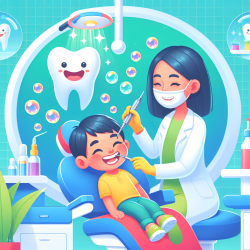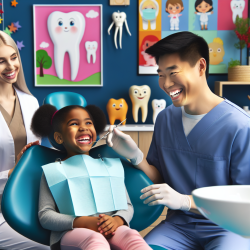Introduction
Dental caries is a prevalent issue affecting children worldwide, often leading to significant health and quality of life impacts. Traditional treatment methods can be invasive and challenging, particularly for young patients who may struggle with cooperation during dental procedures. This is where ozone therapy emerges as a promising alternative, offering a minimally invasive approach to managing caries in primary dentition.
Understanding Ozone Therapy
Ozone (O3) is a naturally occurring molecule composed of three oxygen atoms. It acts as a powerful oxidizing agent with broad-spectrum antimicrobial properties, making it effective in treating various medical conditions. In dentistry, ozone therapy has been explored for its potential to combat cariogenic bacteria, promote healing, and modulate inflammation, thereby offering a non-invasive solution to dental caries management.
Research Insights
A systematic review titled "Ozone Treatment for the Management of Caries in Primary Dentition" evaluates the effectiveness of ozone applications in treating caries in children's primary teeth. The review analyzed seven clinical studies, highlighting that ozone therapy is comparable to other interventions in terms of clinical outcomes and antibacterial activity, with no adverse effects reported. The studies demonstrated good patient acceptance, making ozone therapy particularly beneficial for very young or uncooperative patients.
Practical Applications for Practitioners
For dental practitioners, incorporating ozone therapy into treatment protocols can enhance patient comfort and compliance. Here are some practical steps to consider:
- Integrate ozone therapy as part of a comprehensive caries management strategy, especially for patients who are anxious or have difficulty cooperating.
- Utilize ozone therapy to reduce bacterial load and promote remineralization of dental tissues, potentially reducing the need for more invasive procedures.
- Educate parents and caregivers about the benefits of ozone therapy, emphasizing its safety and effectiveness in managing caries with minimal discomfort.
Encouraging Further Research
While the current evidence is promising, further research is necessary to establish standardized protocols and optimize the use of ozone therapy in pediatric dentistry. Practitioners are encouraged to participate in or support studies that explore the long-term effects and efficacy of ozone therapy compared to conventional methods.
Conclusion
Ozone therapy presents a viable, minimally invasive option for managing dental caries in children. By adopting this approach, practitioners can improve patient experiences and outcomes, particularly for those who are young or struggle with dental anxiety. As research continues to evolve, ozone therapy may become an integral part of modern pediatric dental care.
To read the original research paper, please follow this link: Ozone Treatment for the Management of Caries in Primary Dentition: A Systematic Review of Clinical Studies.










